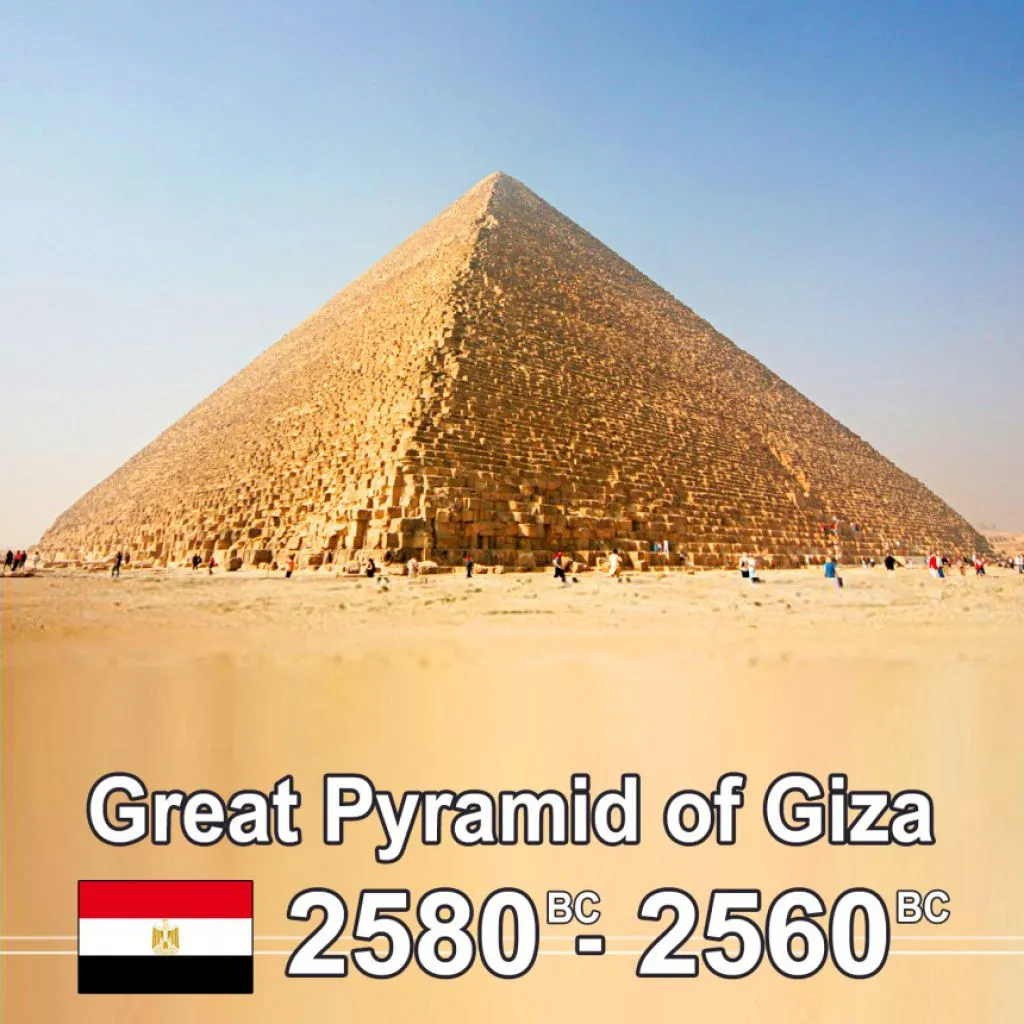
The Great Pyramid of Giza
The Great Pyramid of Giza (also known as the Pyramid of Khufu or the Pyramid of Cheops) is the oldest and largest of the three pyramids in the Giza pyramid complex bordering what is now El Giza, Egypt. It is the oldest of the Seven Wonders of the Ancient
Based on a mark in an interior chamber naming the work gang and a reference to the fourth dynasty Egyptian Pharaoh Khufu, Egyptologists believe that the pyramid was built as a tomb over a 10- to 20-year period concluding around 2560 BC. Initially at 146.5 metres (481 feet), the Great Pyramid was the tallest man-made structure in the world for more than 3,800 years. Originally, the Great Pyramid was covered by limestone casing stones that formed a smooth outer surface; what is seen today is the underlying core structure. Some of the casing stones that once covered the structure can still be seen around the base. There have been varying scientific and alternative theories about the Great Pyramid's construction techniques. Most accepted construction hypotheses are based on the idea that it was built by moving huge stones from a quarry and dragging and lifting them into place.
There are three known chambers inside the Great Pyramid. The lowest chamber is cut into the bedrock upon which the pyramid was built and was unfinished. The so-called Queen's Chamber and King's Chamber are higher up within the pyramid structure. The main part of the Giza complex is a set of buildings that included two mortuary temples in honour of Khufu (one close to the pyramid and one near the Nile), three smaller pyramids for Khufu's wives, an even smaller "satellite" pyramid, a raised causeway connecting the two temples, and small mastaba tombs surrounding the pyramid for nobles.
INSIDE THE PYRAMID


HISTORY AND DESCRIPTION
Egyptologists believe the pyramid was built as a tomb for the Fourth Dynasty Egyptian pharaoh Khufu (often Hellenized as "Cheops") and was constructed over a 20-year period. Khufu's vizier, Hemiunu (also called Hemon) is believed by some to be the architect of the Great Pyramid. It is thought that, at construction, the Great Pyramid was originally 280 Egyptian Royal cubits tall (146.5 metres), but with erosion and absence of its pyramidion, its present height is 138.8 metres. Each base side was 440 cubits, 230.4 metres long. The mass of the pyramid is estimated at 5.9 million tonnes. The volume, including an internal hillock, is roughly 2,500,000 cubic metres.
Based on these estimates, building the pyramid in 20 years would involve installing approximately 800 tonnes of stone every day. Additionally, since it consists of an estimated 2.3 million blocks, completing the building in 20 years would involve moving an average of more than 12 of the blocks into place each hour, day and night. The first precision measurements of the pyramid were made by Egyptologist Sir Flinders Petrie in 1880-82 and published as The Pyramids and Temples of Gizeh. Almost all reports are based on his measurements. Many of the casing-stones and inner chamber blocks of the Great Pyramid fit together with extremely high precision. Based on measurements taken on the north-eastern casing stones, the mean opening of the joints is only 0.5 millimetre wide (1/50 of an inch).
















































